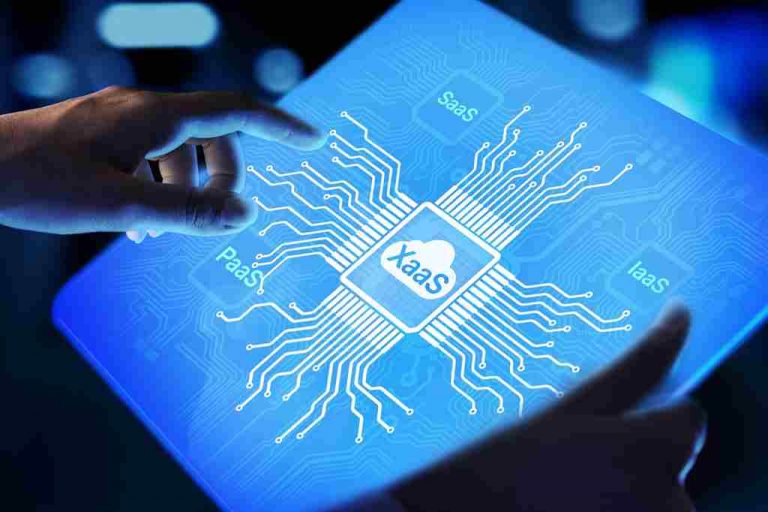Full handbook regression testing after improvement is not a good way to attain high quality. In the longer run lots of valuable time could be saved and better high quality could be ensured by building a comprehensive suite of automated exams. Besides the code, adjustments to ML fashions and the data used to train them are another sort of change that needs to be managed and baked into the software delivery process ( Figure 1). The staging part includes in depth testing for all code changes to confirm they work as intended, using a staging environment, a replica of the manufacturing (live) environment. Another choice is to make use of a serverless architecture to deploy and scale your functions.

Continuous Delivery (CD) is a method of software program development that takes code modifications, exams them in a sensible environment, and then mechanically deploys them to manufacturing. Continuous supply is the best factor to do and infrequently requires champions to jumpstart the transformation. Eventually, when designed proper, steady supply pipelines pay for themselves. Some organizations release products manually by handing them off from one group to the next, which is illustrated within the diagram beneath. Typically, developers are at the left end of this spectrum and operations personnel are at the receiving end. This creates delays at each hand-off that results in annoyed groups and dissatisfied customers.
Continuous Supply Pipeline 101
Containers are a typical runtime destination for CI/CD pipelines, and if they’re in use at this primary stage of the continual supply maturity model, improvement teams have usually adopted Docker photographs defined by a Dockerfile. The core idea of GitOps is to have a central Git repository with a declarative configuration that states which infrastructure and functions are wanted for a production setting. Continuous delivery lets builders automate testing past simply unit tests to enable them to confirm utility updates throughout a quantity of dimensions earlier than deploying to customers.

An intensive, highly focused residency with Red Hat consultants the place you learn to make use of an agile methodology and open source instruments to work in your enterprise’s enterprise issues. The following illustration articulates the workflow discussed in the Component and Subsystem phases. Run impartial steps in parallel to optimize the whole pipeline execution time and get quick suggestions. Unit tests are nearly at all times the primary set of software exams that we run on our code. There are many ways to measure coverage, like line protection, class coverage, methodology protection, and so on.
Build In Quality
Continuous supply (CD) is a software improvement methodology that makes it potential to routinely build, take a look at, and deploy new variations of an utility. Continuous delivery relies on continuous integration (CI) practices (together they are known as CI/CD), but provides the ability to completely automate software deployment to staging and production environments. Continuous integration is a coding philosophy and set of practices that drive development groups to incessantly implement small code changes and examine them in to a model management repository.
A subsequent era CI/CD platform designed for cloud-native purposes, offering dynamic builds, progressive supply, and rather more. Irrespective of where you’re in your journey of steady every thing (integration, testing, delivery, deployment, analytics, and so forth.), it is neither a checklist nor a destination, and continuous improvement is at the heart of it. For instance, Jenkins customers define their pipelines in a Jenkinsfile that describes totally different stages such as build, test, and deploy. Environment variables, choices, secret keys, certifications, and other parameters are declared in the file after which referenced in stages. We’re the world’s leading provider of enterprise open supply solutions—including Linux, cloud, container, and Kubernetes.
A steady deployment pipeline deploys the build mechanically after it passes testing. With steady delivery, each code change is constructed, tested, and then pushed to a non-production testing or staging setting. The difference between continuous delivery and continuous deployment is the presence of a guide approval to replace to manufacturing. With continuous deployment, manufacturing occurs mechanically with out explicit approval. Continuous testing is a method the place automated tests are built-in with the software delivery pipeline, and validate each change that flows via it.
- Cloud services and CD automation simplify the task to create and manage redundant environments for production, beta and developer code.
- This will put to rest any considerations concerning continuous supply pipelines posing risks to businesses.
- The choice between continuous supply and steady deployment depends on the risk tolerance and particular needs of the development groups and operations groups.
- The method helps cut back the cost, time,[citation needed] and risk of delivering changes by permitting for extra incremental updates to functions in manufacturing.
The final choice to deploy to a stay manufacturing surroundings is triggered by the developer. Properly applied CI permits developers to deploy any code change to testing and manufacturing environments late in the software improvement lifecycle (SDLC). Developers can thus depend on construct artifacts which have passed standardized test processes and are ready for deployment.
Continuous deployment emphasizes decreasing the burden on operations teams to accelerate the applying delivery course of, increasing steady supply automation into the next SDLC stage. It sometimes includes automation of further steps in releasing new software program to minimize the handbook processes required. For example, a continuous deployment pipeline may mechanically release the development team’s modifications from the repository to the production environment, where clients can use it.
Ways To Undertake Agile And Devops And Create A Continuous Supply Culture
Many teams use function flags, a configuration mechanism to turn features and code on or off at runtime. Features which may be nonetheless under development are wrapped with characteristic flags within the code, deployed with the main branch to manufacturing, and turned off until they’re ready for use. In recent research, devops groups using function flags had a ninefold improve in development frequency. Feature flagging tools continuous delivery model such as CloudBees, Optimizely Rollouts, and LaunchDarkly integrate with CI/CD tools to assist feature-level configurations. The improvement follow of Continuous Integration is crucial to Continuous Delivery. The key word right here is integration, meaning, in order to catch and fix issues early and repeatedly in growth, Developers commit and integrate their adjustments into main/ trunk every day.

You could have less phases or more, relying in your architecture and necessities. Once validated, the assembled system is then promoted to manufacturing with none further modification, in the final section, referred to as the production section. If you wish to take full advantage of the agility and responsiveness of DevOps, IT safety must play a role within the full life cycle of your apps. One of one of the best recognized open supply tools for CI/CD is the automation server Jenkins. Jenkins is designed to handle something from a simple CI server to an entire CD hub.
Identifying and mitigating vulnerabilities throughout the software program growth cycle assures that code changes are totally tested and adhere to safety requirements before being deployed to production. Because CI/CD automates the manual human intervention traditionally needed to get new code from a commit into production, downtime is minimized and code releases occur sooner. And with the power to more rapidly combine updates and adjustments to code, user feedback can be included extra incessantly and effectively, which means optimistic outcomes for finish customers and extra satisfied customers overall.
We consider this technique will proceed to evolve, and new tools will emerge and disappear, but the core rules of Continuous Delivery remain related and one thing you want to think about for your own Machine Learning purposes. Where appropriate, we are going to spotlight various software choices to the ones we selected. We will also focus on additional areas of growth and research, as the practice matures throughout our business. With software program services and applications more and more changing into distributed and counting on open supply components, the relevant telemetry might come from multiple disparate sources with completely different instrumentation requirements. You ought to implement automatic, continuous monitoring of those sources with the flexibleness to allow steady updates.
A CD pipeline delivers, as per enterprise wants, quality merchandise incessantly and predictably from test to staging to production in an automated fashion. Red Hat OpenShift Pipelines is designed to run every step of the CI/CD pipeline in its personal container, allowing every step to scale independently to meet the demands of the pipeline. This means admins and builders can create pipeline blueprints for applications that are based on their organization’s unique enterprise and security requirements.
New releases nondisruptively roll into manufacturing after an appropriate testing cycle with the help of parallel setups. At the base, we want a straightforward approach to handle, discover, entry, and version our information. We then automate the model constructing and training process to make it reproducible. This permits us to experiment and prepare multiple models, which brings a have to measure and monitor those experiments.

A pillar of recent software development, steady delivery expands upon steady integration by deploying all code modifications to a testing surroundings and/or a manufacturing environment after the construct stage. When correctly carried out, developers will always have a deployment-ready construct artifact that has passed via a standardized test process https://www.globalcloudteam.com/. In fashionable software growth, the aim is to have a quantity of developers working concurrently on totally different features of the identical app. However, if a company is ready up to merge all branching source code together on one day (known as “merge day”), the resulting work can be tedious, handbook, and time-intensive.
If there are variations, it instantly updates the infrastructure to match the environment repository. It also can check an image registry to see if there is a new model of an image available to deploy. Even essentially the most thorough testing can not guarantee that an utility will behave accurately within the manufacturing environment.